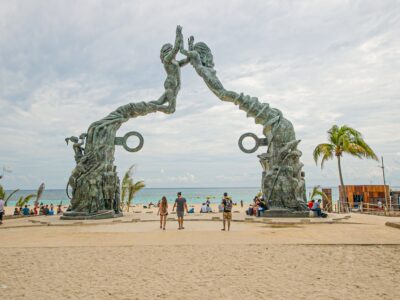Latin America has beautiful scenery and a lot of different cultures, but it also has big social and economic problems. Poverty and education are two that stand out as being highly linked problems that affect each other in a circle of bad behavior. This relationship is important for everyone involved, as well as for the growth and stability of the area as a whole.
How to Understand the Amount of Poverty in Latin America
Even though Latin America has made progress in reducing extreme poverty over the past few years, poverty is still a problem there. Recent numbers show that almost one-third of the population lives in poverty. Many of these people have problems that make it hard for them to get a good education.
In this area, poverty is often marked by:
- Low incomes make it hard for families to put money into their children’s schooling.
- Parents who work long hours for little pay in informal labor markets don’t have much time to help their kids with schoolwork at home.
- Isolation by geography, especially in rural and native places where it’s hard to get to school.
- Because of these things, kids are more likely to drop out of school early, either to help make money for the family or because their families can’t afford extra costs like clothes, transportation, or books.
How education can help break the cycle of poverty
Education plays a critical role in breaking the cycle of poverty by providing individuals with the skills and knowledge needed to secure better opportunities and improve their quality of life. When students from underprivileged backgrounds receive access to quality education, they are empowered to pursue higher-paying jobs and achieve financial stability. However, many students struggle with the demands of academic life, especially when juggling personal challenges. Students can easily request, “Write my college essay via PapersOwl,” and receive expert guidance on academic assignments, allowing them to focus on mastering their subjects and building a brighter future. Education not only transforms individuals but also uplifts entire communities by breaking generational poverty and fostering long-term economic growth.
- Moving up in the economy
Getting educated gives people the skills and credentials they need for jobs that pay more. A workforce with more education helps the economy grow, which is good for whole towns.
- Empowerment and Decision-Making
Education gives people the knowledge they need to make smart choices about their families, health, and funds. It helps people learn how to think critically and solve problems, which are important skills for getting through life’s difficulties.
- Ending Poverty Across Generations
Parents who are educated are more likely to put their children’s schooling first, which has an impact that lasts for generations. This is why putting money into schooling is so important: it pays off over time.
How Poverty Affects Education
There are many ways that poverty affects schooling in Latin America. Here are a few of the most important ways it shows up:
- Fewer people can get to schools
Families with little money often live in rural or underserved places with few schools for their kids. Schools may not be fully functional even when they are open, with overcrowded classes, teachers who haven’t been trained, and basic supplies that aren’t available.
Imagine a student who has to walk miles every day to get to a school that doesn’t have the right supplies. Wouldn’t it be hard to keep going?
- A lot of students drop out
Many poor families don’t see school as important; they see it as a treat. When kids’ lives are in danger, they are often taken out of school to work or take care of younger peers. This is one reason why so many people drop out of school, especially in high school.
- Poor diet and health problems
Kids who aren’t getting enough food have a hard time focusing, remembering things, and staying interested in school. Being sick also means missing a lot of school, which makes learning even more difficult.
- Stress on the mind
Kids can feel a lot of stress when they live in poverty, which can hurt their mental and emotional health. This often makes people do worse in school and feel worse about their own self-worth.
Problems with Fair Schooling in Latin America
Even though Latin America knows how important education is, it has a long way to go before it can be fair for everyone. The biggest problems are some of the following:
- Unequal pay In Different Areas
In general, schools in cities have better facilities, more trained teachers, and more up-to-date materials than schools in rural places. Indigenous and Afro-descendant people are especially at a disadvantage.
- Schools that don’t have enough money
A lot of governments in the area don’t give enough money to schooling. Because of this, schools don’t have the tools, supplies, and help they need to be good places to learn.
- Unstable government
Long-term educational projects are often hampered by things like corruption, frequent changes in government, and economic problems. This lack of uniformity makes it harder to fix problems at the system level.
Possible Ways to Break the Cycle of Poverty and Education
To break the cycle of poverty and problems in schooling in Latin America, many things need to be done:
Investing in Early Childhood Education: Investing in early childhood education is essential for breaking the cycle of poverty, as it sets the stage for lifelong learning and success. Early exposure to structured learning environments helps children develop critical thinking and problem-solving skills, which are vital as they progress through school. For instance, as they grow older, students can explore complex subjects like literature, analyzing works such as Macbeth. Accessing resources Macbeth essay examples can provide valuable insights and foster a deeper understanding of these texts. This type of engagement not only strengthens academic skills but also cultivates confidence and creativity, empowering children to envision brighter futures.
Improving School Infrastructure: The quality of education can be greatly improved by having better facilities, enough tools, and trained teachers.
Helping Families with Money: In many countries, conditional cash transfer programs that give families money if they keep their kids in school have worked well.
Getting the community involved: Getting parents and the community involved in education projects is one way to make sure that schools meet the needs of their students.
Getting rid of systemic inequality: Policies that target underrepresented groups can help close gaps in quality and access.
In conclusion
Poverty and education are closely linked in Latin America. This is a problem that can be solved, but it is not easy. It is possible to break the cycle of poverty through education, but it takes a lot of money, time, and effort from governments, communities, and foreign partners.
The post Connection Between Poverty And Education In Latin America first appeared on The Yucatan Times.














